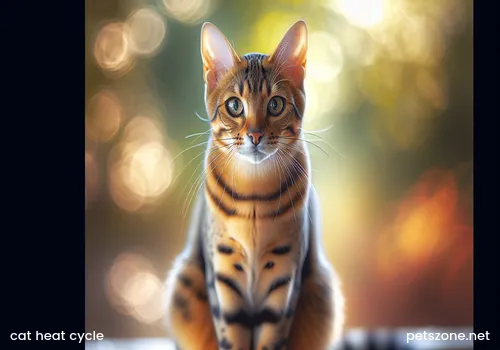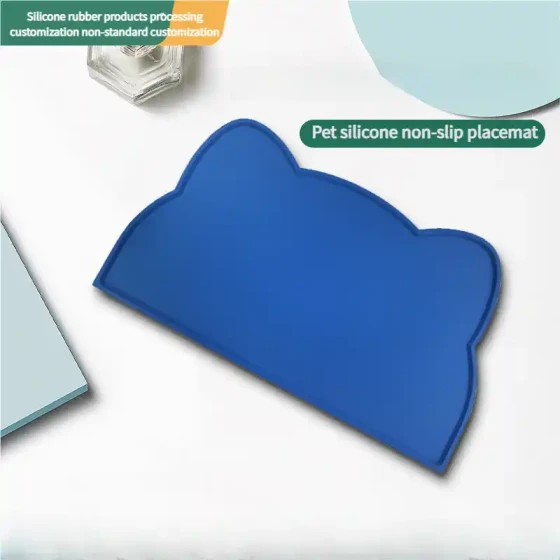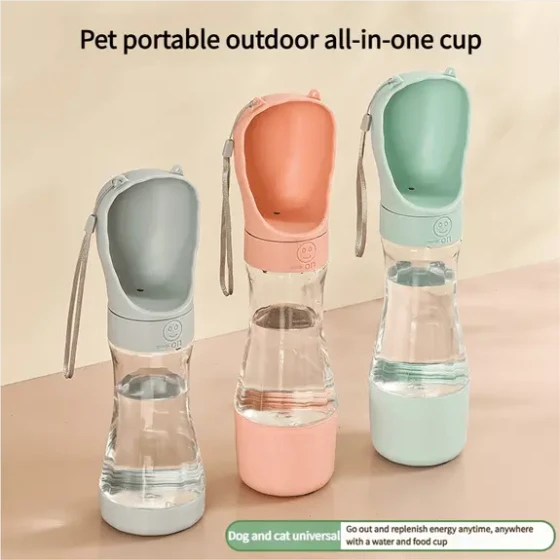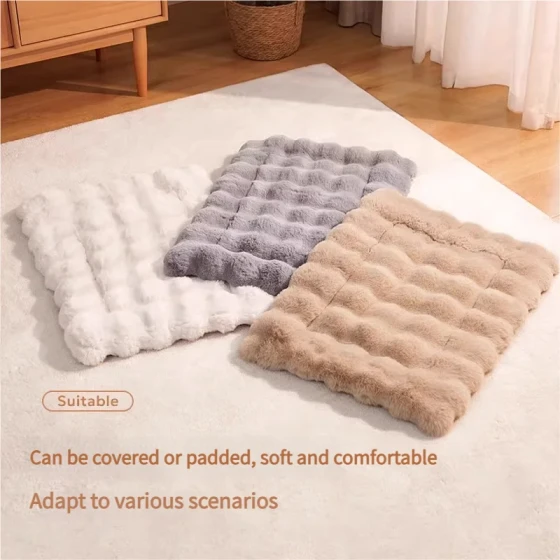Cat Months of Heat_Full Analysis of the Heat Cycle
Ok, let's talk about that “not suitable for children” yet utterly natural physiological cycle of cats—the heat. This is an unavoidable topic in cat ownership life, especially when your feline companion reaches a certain age and suddenly transforms into a “walking bass cannon” or “demanding little devil,” you’ll realize the show has begun. Simply put, a female cat’s heat is her body’s unique way of “calling for love,” marking her sexual maturity and readiness to welcome new life.
Cats usually enter their first heat several months after birth, and there isn’t an absolute "standard answer." Many factors affect this, roughly between 4 to 12 months, but there are individual differences—some as early as 3 or 4 months, others as late as a year and a half. Once it starts, unless pregnant or spayed, this cycle will repeat, especially during seasons when daylight hours lengthen.
Many new cat owners, including some veterans, often get confused or anxious seeing their cat's “amazing performance” in heat, thinking she might be ill. Don’t worry, this is actually a manifestation of natural law. To understand a cat’s heat, we need to start from their physiological mechanism.

The Secret of "Long Daylight Animals"
Biologically, cats are classified as "seasonally polyestrous animals," and are typical "long day breeders." What does this mean? Simply put, their heat cycle is greatly influenced by the length of daylight. When the daily light exposure exceeds a certain threshold (usually considered 10-14 hours), hormone levels in the cat’s body change, triggering heat.
In the Northern Hemisphere, this typically occurs from late winter to early spring (around January or February) through late summer to early autumn (around August or September). So, every spring and autumn, you might hear rising and falling "cat calls for heat" in your neighborhood or even at home. However, indoor cats exposed to artificial lighting for extended periods, especially in brightly lit evenings, may have their brains mistakenly perceive "long daylight," leading to year-round heat cycles without clear seasonal patterns.
When Is the "Coming of Age"?
As mentioned earlier, the age of a cat’s first heat varies greatly. Most female cats have their "menarche" between 5 to 9 months old. Some early-maturing breeds, like Siamese cats, may become restless as early as 4 months, while some long-haired or large breeds, such as Maine Coons, may not start until 10 months or even 1.5 years. This is similar to human puberty—some early, some late, so don’t worry excessively.
Heat Cycle: A Recurring "Mating Show"
A cat’s full heat cycle isn’t simply about “coming and going” but involves several complex stages. If simplified, the most troublesome stage for owners, known as “estrus,” usually lasts from 3 to 14 days, averaging about a week.
Interestingly, cats are "induced ovulators," meaning their ovaries usually do not ovulate automatically but require mating behavior to stimulate ovulation. If mating does not occur during heat, the cat will enter a short “rest period” (usually 1 to 3 weeks) before entering the next heat. Without pregnancy, this cycle may continue through the entire breeding season or, for indoor cats, year-round. Some information shows that unbred female cats can go into heat every 2-3 weeks, which can really drive owners crazy.
“Is This Still My Cat?” — Typical Signs of Heat
If your cat has reached the appropriate age and suddenly seems like a “different cat,” it’s very likely she is in heat. These signs are often quite indicative:
- Vocal Assault: The most iconic signal, commonly called “calling for heat.” Cats emit loud, continuous, sometimes baby-like crying or pained moaning sounds, especially at night, trying to attract tomcats. The penetrating power is a known neighborhood test, the ultimate weapon testing neighbor relations.
- Rubbing Frenzy: Becomes unusually clingy, constantly rubbing her body, head, and side belly against you, furniture, walls, and everything to leave her scent. This marks territory and signals to the outside world “I am ready.”
- “Raised Butt” and “Kneading Dance”: When you stroke her back or the base of her tail, she will arch her body, raise her bottom, tilt her tail to one side, and her hind legs may make kneading or kicking motions. This is the typical mating acceptance posture.
- Rolling on the Floor: Frequently rolls and twists her body on the floor, sometimes purring low or howling.
- Decreased Appetite and Restlessness: Some cats may eat less during heat and become restless, always wanting to go outside to find potential mates.
- Licking Genitals: May lick her genital area more often, which might appear slightly swollen with occasional clear or white discharge, but usually unlike dogs with obvious bleeding (so don’t expect a dog-like “period”).
- Marking Behavior: A few female cats may spray urine during heat. While more common in male cats, females also use urine to spread pheromones that attract mates.
Male cats also have heat periods, usually reaching sexual maturity later than females, around 8-13 months old. Male cats’ heat mainly shows as strong territorial marking behavior (spraying urine everywhere with a quite pungent smell), howling, restlessness, desperate attempts to rush outside to find females, and possibly aggression toward other males. Male cat heat is largely stimulated by the smell and calls of females in heat.
How to "Survive the Ordeal" and Long-Term Plans
Faced with a cat in heat, especially a female’s hysterical “calling for heat,” many owners feel helpless. Short-term relief methods include:
- Increased Interaction and Play: To tire her out and distract her attention.
- Provide a Warm and Comfortable Environment: Some cats enjoy warm places; mimicking a partner’s body temperature may help relax them a bit.
- Use Pheromone Products: There are feline pheromone products on the market (like Feliway) that simulate the soothing pheromones secreted by facial glands, helping to relieve tension and anxiety.
- Gentle Soothing: Appropriate petting and gentle pressure at the base of the tail (simulating pre-mating cues), but be cautious—some cats may be overly sensitive or aggressive during heat, so safety comes first.
However, these methods are just a drop in the bucket and cannot stop the heat cycle itself. More importantly, long-term absence of heat or frequent unbred heat cycles pose potential health risks, increasing chances of pyometra, ovarian cysts, mammary tumors, and other diseases. At the same time, letting cats outside to mate can cause more problems like accidental pregnancies resulting in many strays, disease infections (like FIV, FeLV), and various outdoor dangers (car accidents, fights, etc.).
Therefore, from both veterinary and responsible pet owner perspectives, spaying (ovariohysterectomy for females, castration for males) is the best solution to cat heat problems and ensures their long-term health and welfare.
Some Thoughts on Spaying and Neutering
Many people have concerns about spaying surgery, considering it “cruel” or “depriving cats of the right to be parents.” But as the French philosopher Pascal said, “Man is a thinking reed.” We are the only species capable of making rational decisions for the overall welfare of pets. Given the reality of cat overpopulation and shelter pressure, controlling reproduction is not only to avoid heat-related troubles but a responsibility towards life.
Veterinarians generally recommend spaying before the first heat (usually around 5-6 months old) to minimize risks of reproductive system-related diseases. Of course, even if the cat has already gone through heat or had offspring, spaying surgery remains safe and highly beneficial. Modern veterinary medicine is very advanced; spaying is a routine and low-risk procedure.
Conclusion
Understanding a cat’s heat is an important lesson in learning about her physiology and behavior. It’s not just about “how many months before heat” and “how long it lasts,” but how to scientifically and responsibly care for these little lives. When they show “abnormalities” driven by biological instincts, as owners, what we need is understanding, patience, and to make the most beneficial choices for them. Sometimes, love means making decisions that seem “unnatural” to ensure their healthier, safer, and calmer life. This perhaps is the deepest interpretation of “heat” in modern cat-keeping philosophy.
References:
- PetMD article on cat heat
- PDSA (UK People’s Dispensary for Sick Animals) information on cat heat
- VCA Animal Hospitals explanation of cat heat cycle
- Purina official site science on cat heat and neutering
- Various pet health science platforms and veterinary professional literature discussing feline reproductive physiology
-560x560.webp)




